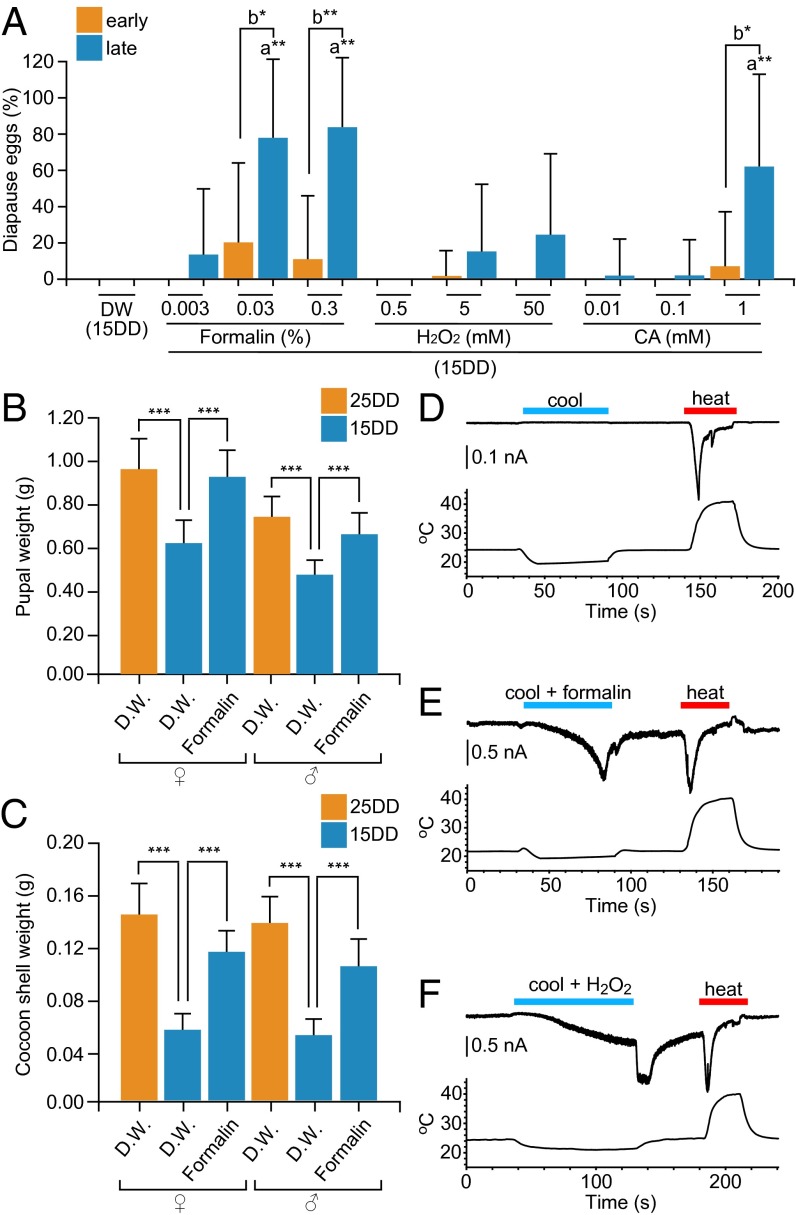Fig. 5.
Chemical compounds activate BmTRPA1 independently of heat, induce diapause, and increase body and cocoon-shell weight. (A) Effect of treatment with chemical compounds on diapause-egg–inducing activity. Eggs were incubated at 15DD with formalin, H2O2, and CA, and the percentage of diapause eggs produced by their progeny was calculated. The moths were divided into two groups: larvae that initiated spinning earlier (<50% of total larvae; early), and larvae that initiated spinning later (>50% of total larvae; late). (B and C) Effects on pupal and cocoon-shell weights. Eggs were incubated at 25 °C or 15 °C in the dark with or without 0.3% formalin. Pupae (B) and cocoon-shell (C) weights after 3 d of pupation are shown. In A–C, 15DD (n = 54), 25DD (n = 141), formalin (0.003%; n = 23, 0.03%; n = 46, 0.3%, n = 87), H2O2 (0.5 mM; n = 64, 5 mM; n = 68, 50 mM; n = 72), CA (0.01 mM; n = 52, 0.1 mM; n = 53, 1 mM; n = 44). Data represent means ± SD; ***P < 0.001, **P < 0.01, *P < 0.05. In A, lowercase letters indicate statistically significant differences in DW-treated vs. chemical-compound-treated animals (a), and early vs. late animals (b). (D–F) Temporal changes in current (Upper trace) in a BmTRPA1-expressing cell, and temperature (Lower trace) during temperature fluctuation without additional chemical compounds (D), with 0.01% formalin (E), and 10 mM H2O2 (F) during cooling in a whole-cell patch-clamp experiment. Membrane potential was held at −60 mV. Note that a sudden increase in current level was observed after H2O2 washout, probably because currents were still gradually developing at that time and were enhanced by the temperature increase.

